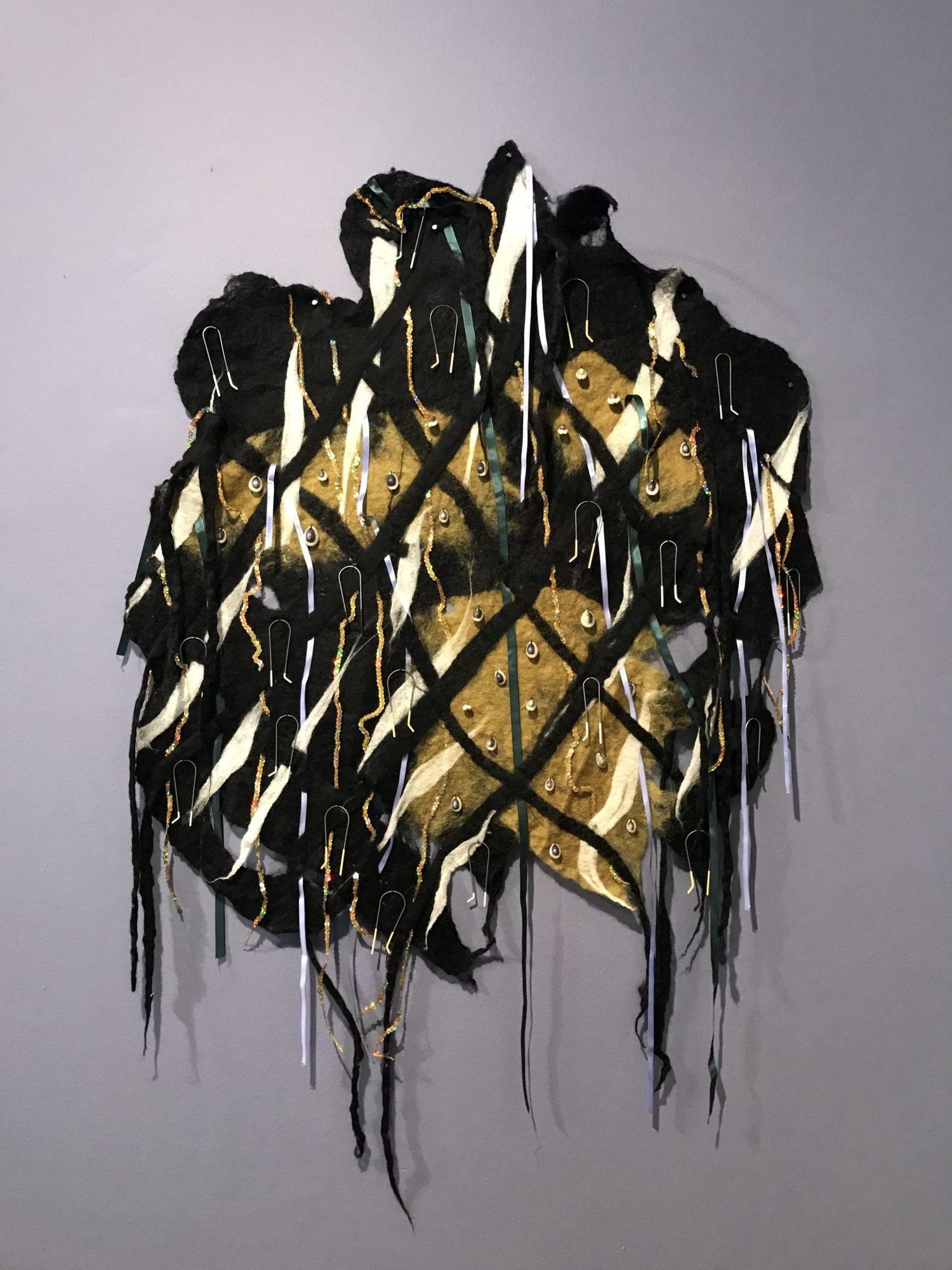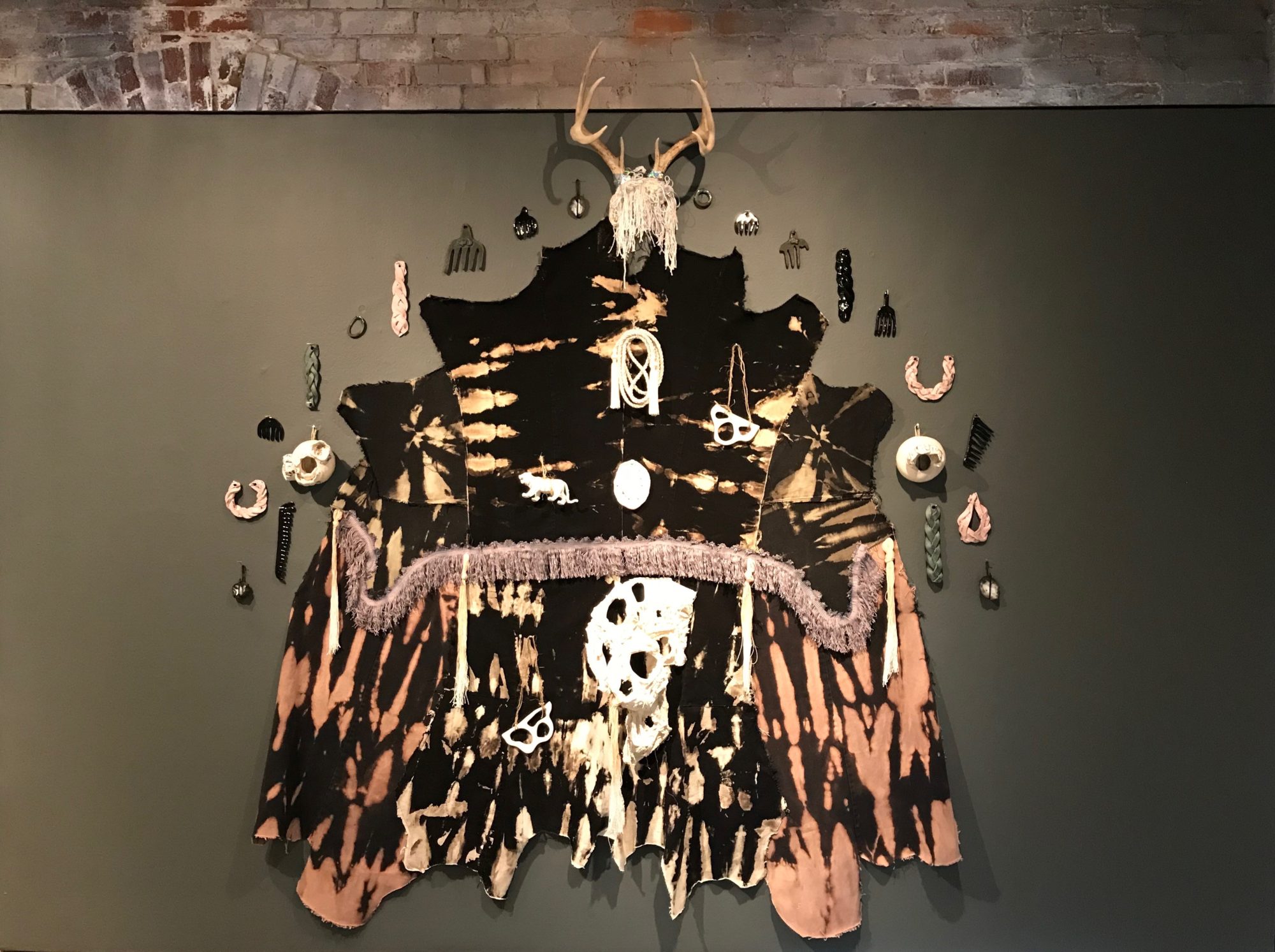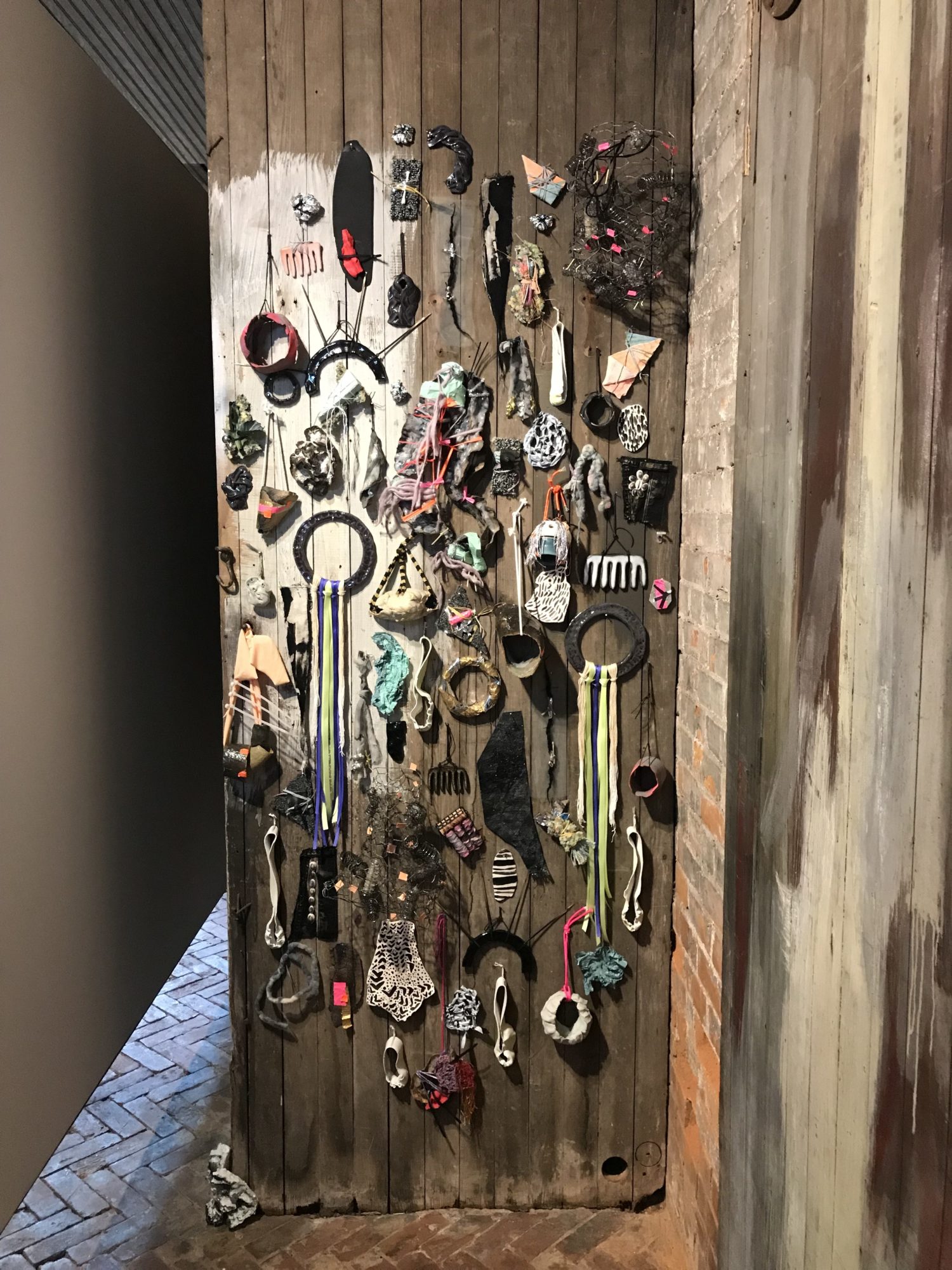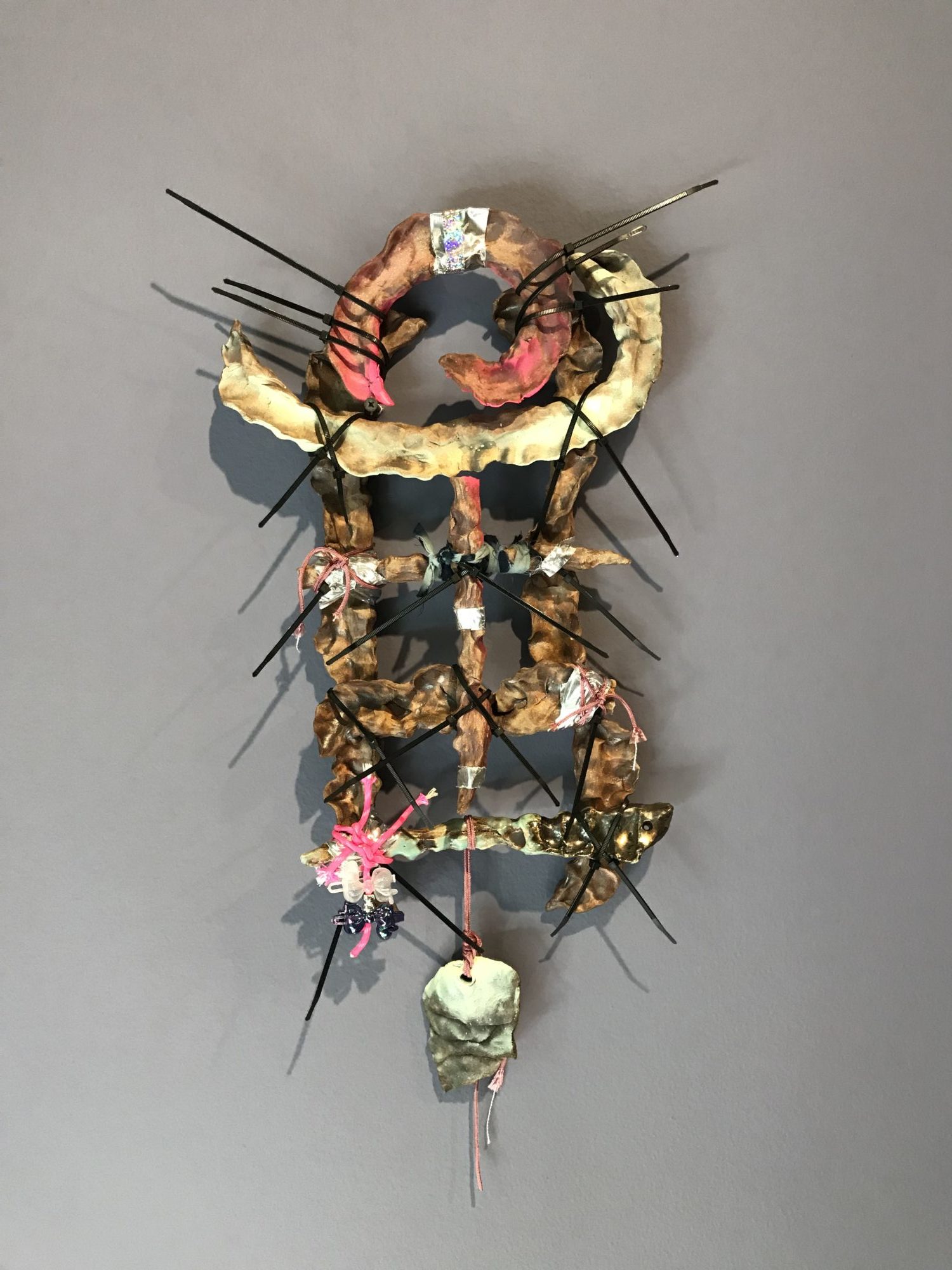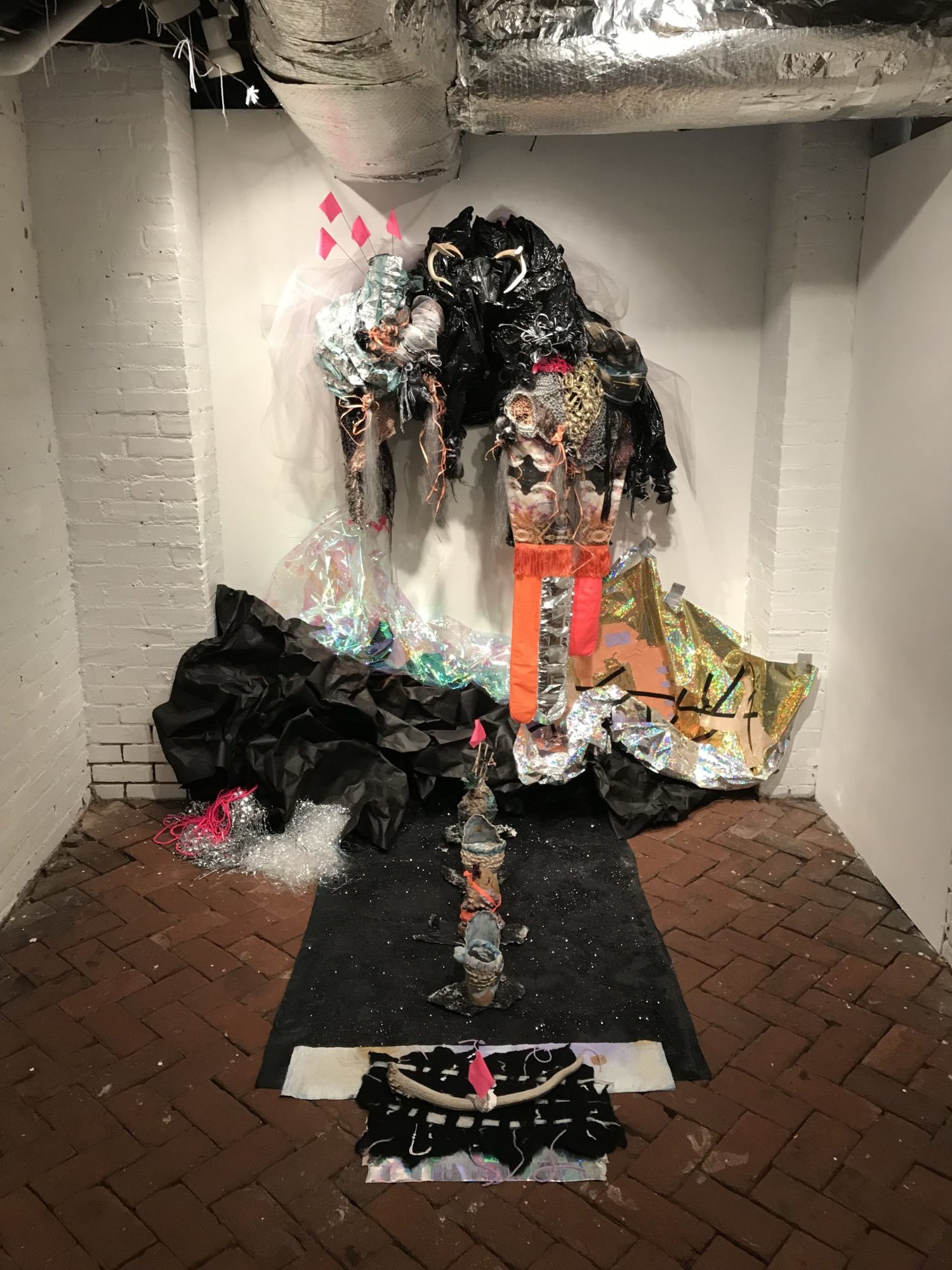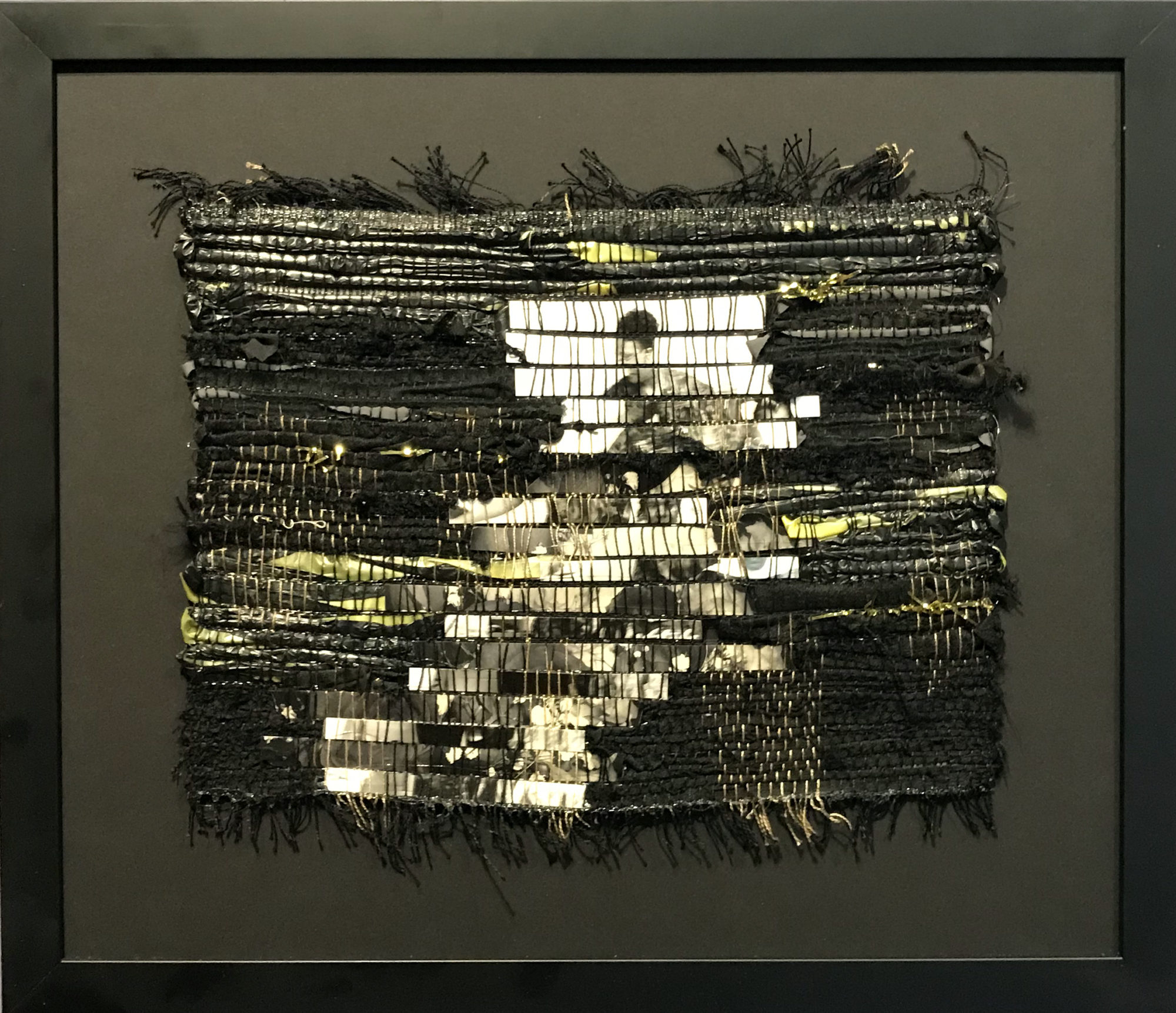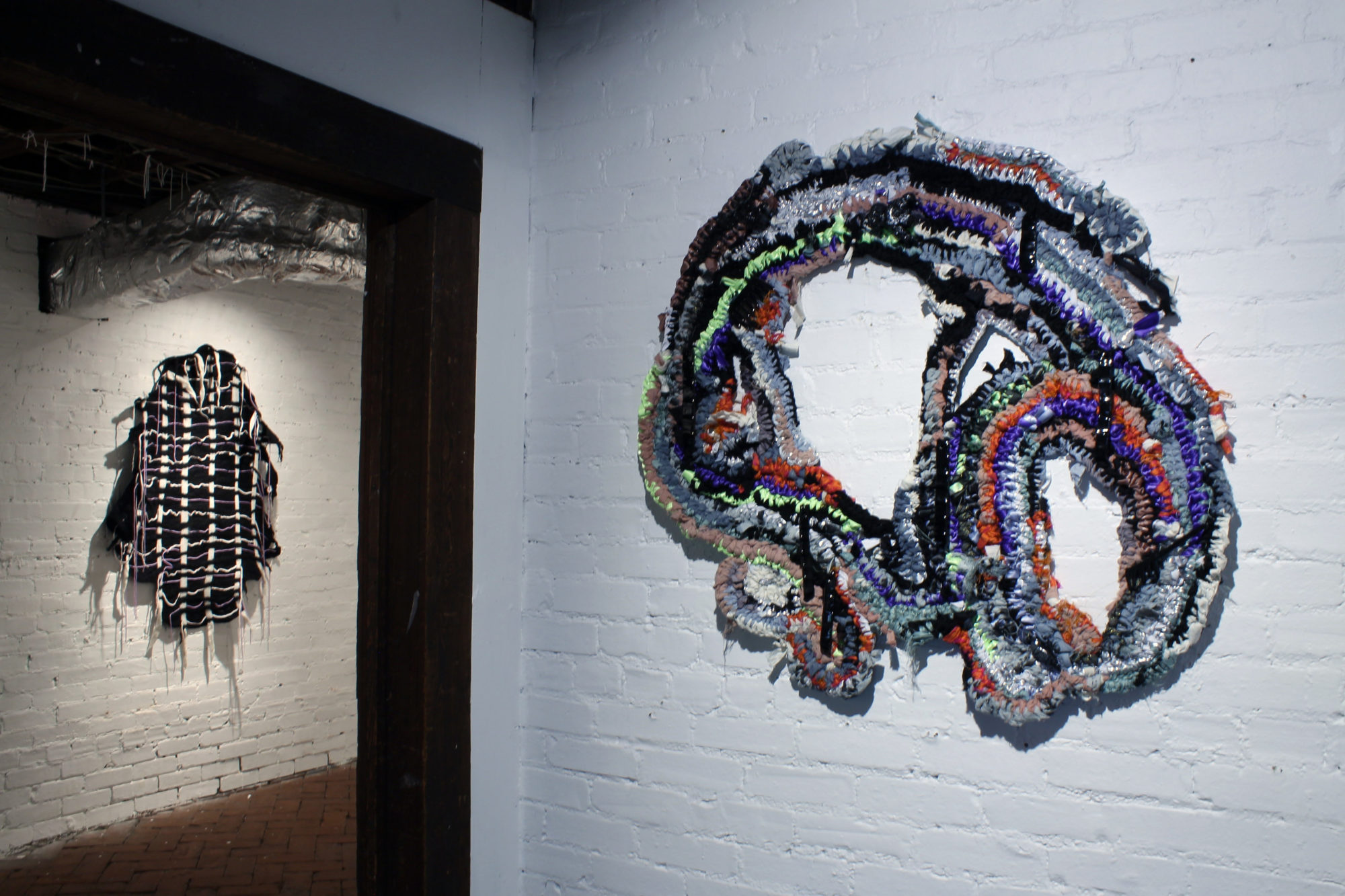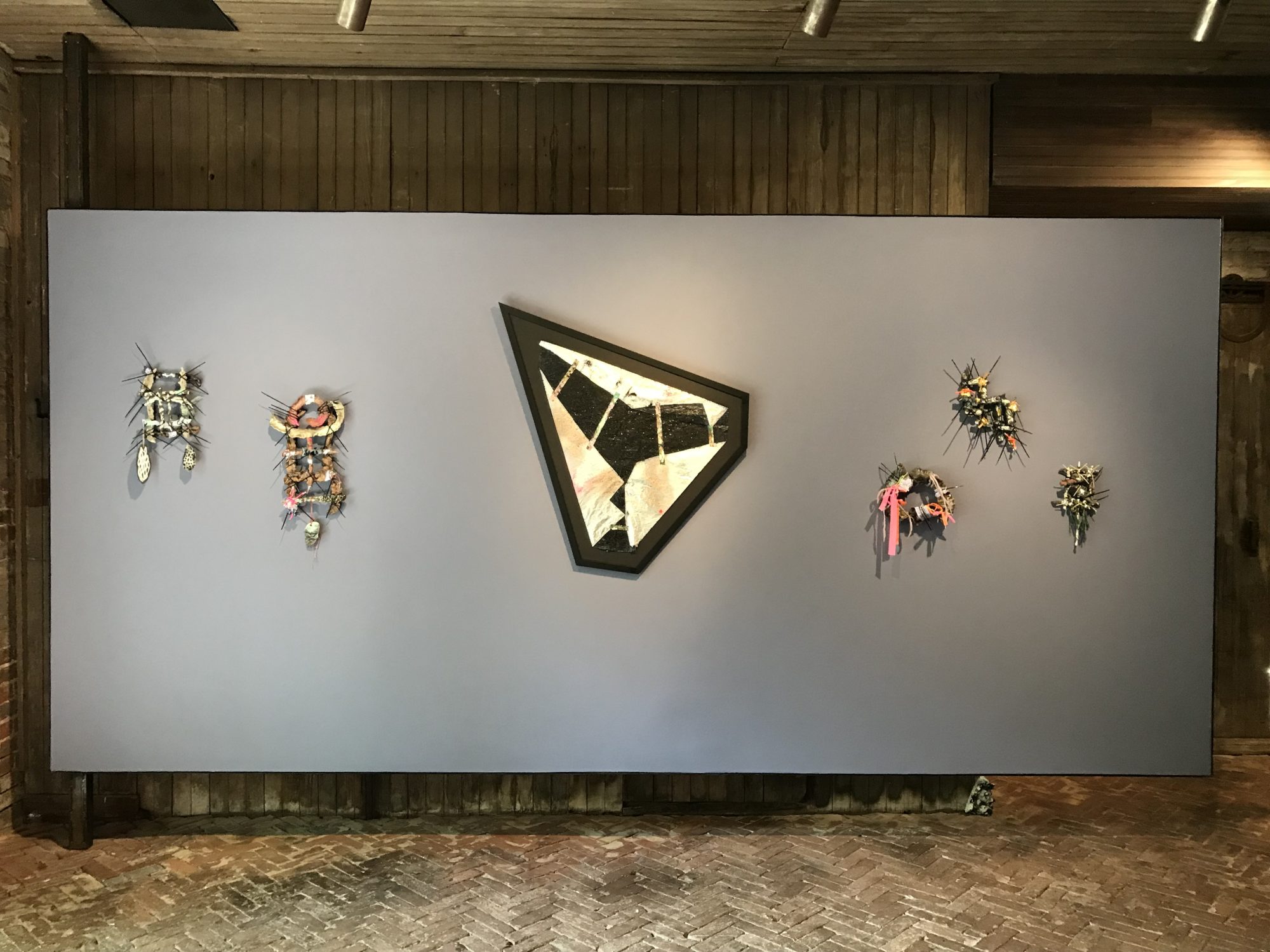Zipporah Camille Thompson: Black Cloud Prism
Zipporah Camille Thompson, installation view of “Yemoja: Monsoon Milk,” 2018, handwoven, printed fabric, cotton, linen, rope, mylar, tarp, glitter, beads, balloons, felt, tape, thread, fringe, eco-dye, bones stoneware, glazes, oxides [courtesy of the artist and Whitespace Gallery, Atlanta]
Share:
Zipporah Camille Thompson’s Black Cloud Prism [September 7–October 20, 2018] at Whitespace in Atlanta fuses millennial tech-savvy with ancient cultural practices to invest mundane materials with “sympathetic magic,” defined by Merriam-Webster as “magic based on the assumption that a person or thing can be supernaturally affected through its name or an object representing it.” Thompson recently returned from Oaxaca, Mexico, where a 2017 grant from Idea Capital Atlanta enabled her to study Zapotec black clay pottery and weaving traditions. Black Cloud Prism includes weavings, jug-like objects, and installations that allude to altars and ritual, all made in 2018. Throughout the exhibition are panels, cut with irregular angles, on which tarpaulin material, paint, glitter, and tape create intriguing cosmic markers. Thompson transforms these humble materials into precious objects that represent ancient and contemporary beliefs about the universe. Their titles, such as meteorite invocation and messenger, evoke otherworldly communicative powers.
In a constellation of six works, Galaxial Gathering and Space Bun Daydream appear initially to be woven mats of thread, ribbon, and coarser natural fibers mounted in black rectangular frames. Their rustic appearance belies the commercial, synthetic identity of some of their materials. Raffia, found in both works, is made from the leaves of the raffia palm tree, but the weavings also include audio cassette tape, plastic hair barrettes, and photographs that have been cut into ribbon-like strips. Each of Thompson’s carefully selected and manipulated materials imparts personal significance to her woven artworks.
In contrast with the sturdy materials in her woven works, Sky Contemplation is ethereal and dream-like. Panels of diaphanous tulle and silk stained with irregular splotches of black ink drape a weathered wooden bar. Metal clips used in salons to secure hair rollers seem to float across the surface, along with locks of black wool tied with raffia, thread, and foil. Two tapestry fragments resemble cartoonish owl characters, and the woolen locks and roller clips conjure Saturday afternoons Thompson spent in Charlotte at her grandmother’s house, where the women in her family would gather to do each other’s hair.
Oshunmare: Rainbow Ritual also uses roller clips and wool that Thompson has felted—a process that involves washing fibers in hot water and working them until they enmesh. In this work, the roller clips intermingle with strands of golden sequins, small cowry shells, and white ribbon woven across the felted surface. Drawn from the pantheon of the Yoruba people of West Africa, the orisha Oshunmare is the spirit of the rainbow. Thompson’s addition of cowry shells, which are valued in West African cultures as currency and as divination tools in Yoruba rituals, ties her experience as an African-American woman in the South to ancient African traditions.
Thompson’s large installation Summoning the Storm exemplifies her ability to transform materials, as well as her subtle evocation of themes involving race and gender.
Zipporah Camille Thompson, Oshunmare: Rainbow Ritual, 2018, wool, dye, roller clips, ribbon, sequins, cowrie shells, 48” x 31” [courtesy of the artist and Whitespace Gallery, Atlanta]
The installation resembles stitched-together animal hides surmounted by antlers and surrounded by ropes, bones, and miscellaneous tools. The arrangement is something one might expect to see in a museum display of Native American artifacts. The “hides” are black denim jeans that Thompson dismantled, dyed with bleach, and then stitched back together. She observed that whereas bleaching blue jeans creates pale blue and white patches, bleached black jeans make shades of brown and tan. Thompson’s metaphorical breakdown of black into many browns is reinforced by surrounding objects such as glazed ceramic forms resembling Afro-pick combs. What initially appears to be sun-bleached bone, a rounded form near the center of the work, is actually cotton fabric cut and fringed to resemble lace or embroidery and then stiffened with white paint.
A series of mixed media vessels interspersed throughout the galleries reflect her recent experience in Oaxaca, as does Prairie Hover. It combines pieces of black-glazed stoneware with a rainbow of tightly braided ribbons in an irregular cloud-like shape. The ribbons were inspired by ones traditionally worn in Zapotec women’s hair. Recalling Zapotec black clay pottery, Yoni Charm Doppler is a mixed media assemblage of what appear to be metal candlestick holders and foam shapes attached to a central black vessel. The foam shapes are actually painted ceramic, and the candlestick holders are painted and glazed stoneware Thompson identifies as “listening vessels” that open into the pot’s center. Pinched ceramic handles on the sides lend the vessel a sense of its having arms akimbo, and similar rounded handles on top resemble a headdress, as if the vessel were an elaborately garbed, ceremonial personage.
Zipporah Camille Thompson, Summoning the Storm, 2018, found denim, bleach, linen, cotton, dye, paint, stoneware, glazes, toy tiger, tassel, antlers, woven, dimensions vary [courtesy of the artist and Whitespace Gallery, Atlanta]
La Sombre (The Shadow, The Shade) is similarly anthropomorphic, although this time the constituent media include plastic and tape that have been shaped to resemble the glazed stoneware body. Gilded openings function as portals to its interior. Adjacent is the large mixed media installation Yemoja: Monsoon Milk, named for the mother of all Yoruba gods and goddesses. This elaborate work juxtaposes Thompson’s thematic investigations with familiar as well as unexpected imagery to evoke new associations. Mats of hand-woven fiber hang vertically as the support for objects and textile characters. What looks like plaited hair is woven into a vessel or hat that projects from beneath a turquoise fringe. Fabric runners resemble religious vestments with triangular tops, creating totemic figures. Woven and felted wool combine with polyester film, black and gray pieces of fabric, and thread to resemble a ceremonial vest or uniform jacket. As in all of Thompson’s work, references to popular culture, ancient ritual, and her own identity abound.
The exhibition’s title, Black Cloud Prism, brings her body of work full circle, from ancient mythologies and ancestral spirits, to the prism’s ability to break white light into a rainbow of different colors, to the new meaning of “cloud” as a digital site that allows the storing, sharing, and even collaborative creation of new ideas by people from different backgrounds in different places. Paraphrased from the project description for her work in Oaxaca, Thompson strives to cultivate harmony between individuals and peoples by engaging the cosmos and positioning humanity according to the microscopic role humans play in the macrocosm of of the universe.
